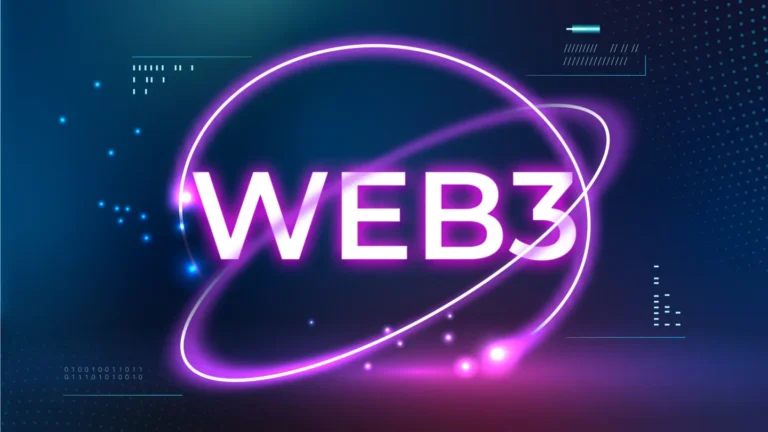The emergence of Web3 has revolutionized how we interact with the digital world. From enabling decentralized finance to empowering content creators, Web3 technologies are reshaping industries and redefining online experiences. Among its most transformative applications are NFTs (Non-Fungible Tokens) and digital identity solutions, both of which are laying the groundwork for a more secure, user-centric, and decentralized internet.
The Rise of NFTs: More Than Digital Art
When NFTs first captured public attention, they were synonymous with digital art and collectibles. Iconic pieces like Beeple’s $69 million NFT auction underscored the potential for digital ownership. However, NFTs have evolved far beyond the realm of art.
Key NFT Use Cases in Web3:
- Gaming Assets: NFTs are transforming the gaming industry by enabling players to own, trade, and monetize in-game assets. Games like Axie Infinity and The Sandbox exemplify this shift.
- Tokenized Real Estate: Virtual real estate platforms, such as Decentraland, allow users to buy, sell, and develop virtual plots as NFTs.
- Music and Media Rights: Musicians are using NFTs to directly monetize their content, offering exclusive rights and access to fans without intermediaries.
- Event Tickets and Memberships: NFTs can function as verifiable digital tickets for events or as membership passes for exclusive communities.
- Intellectual Property Protection: Digital creators can use NFTs to establish provenance and authenticity for their works, reducing piracy risks.
The value of NFTs lies in their ability to confer true digital ownership, a concept that was largely missing from the Web2 era.
Digital Identity in Web3: A New Paradigm
In the traditional internet landscape, users are often required to share sensitive personal information with multiple platforms, exposing them to privacy breaches and identity theft. Web3 aims to change this dynamic through decentralized identity solutions.
What is Decentralized Digital Identity?
A decentralized digital identity is a self-sovereign identity that allows individuals to control their personal data without relying on centralized authorities. Powered by blockchain technology, these identities are secure, verifiable, and interoperable across platforms.
Use Cases for Digital Identity in Web3:
- Authentication and Verification: Instead of relying on passwords, users can log into platforms with cryptographic keys, enhancing security and privacy.
- KYC (Know Your Customer) Compliance: Decentralized identity solutions streamline KYC processes for financial services while preserving user privacy.
- Credential Management: Educational institutions and employers can issue verifiable credentials on the blockchain, reducing the risk of fraud.
- Data Monetization: Users can choose to monetize their data by sharing it selectively with advertisers and companies.
- DAO Governance: Digital identities enable transparent and verifiable participation in decentralized governance structures.
The Convergence of NFTs and Digital Identity
As Web3 technologies mature, NFTs and digital identity are beginning to converge, opening up new possibilities for innovation.
- Verified NFT Ownership: Digital identities can be linked to NFTs, proving ownership and authenticity.
- Personalized Digital Spaces: Users can curate digital spaces, such as virtual galleries, where their NFT collections are displayed under their verified identity.
- Community Memberships: Exclusive NFT-based memberships can be verified through digital identities, enhancing community experiences.
This fusion of technologies empowers users to build authentic, secure, and meaningful digital experiences.
Challenges and Risks
Despite their promise, NFTs and digital identity solutions face several challenges:
- Security Vulnerabilities: The risk of hacks and phishing attacks targeting wallets and identities remains significant.
- Regulatory Uncertainty: Governments are still formulating policies around NFTs and decentralized identities.
- Interoperability Issues: Ensuring that digital identities and NFTs work seamlessly across platforms requires ongoing technological advancements.
- User Adoption: Educating users about the benefits and complexities of these technologies is essential for widespread adoption.
The Future of Web3 Use Cases
The potential for NFTs and digital identity in Web3 is vast. As blockchain technology continues to evolve, we can expect:
- Greater Interoperability: Seamless interactions between platforms and networks will enhance user experiences.
- Enhanced Privacy Protections: Decentralized identity solutions will put data ownership back in the hands of users.
- New Business Models: Content creators, developers, and entrepreneurs will explore innovative ways to leverage NFTs and digital identities.
- Broader Adoption: As regulatory frameworks become clearer and user-friendly interfaces emerge, more individuals and organizations will embrace these technologies.
Conclusion
From NFTs revolutionizing digital ownership to digital identities redefining online privacy, Web3’s expanding use cases are transforming how we interact with technology. As these innovations converge, they promise to create a more inclusive, secure, and user-centric internet. For those willing to explore the possibilities, the future of Web3 offers endless opportunities to redefine digital experiences and interactions.






